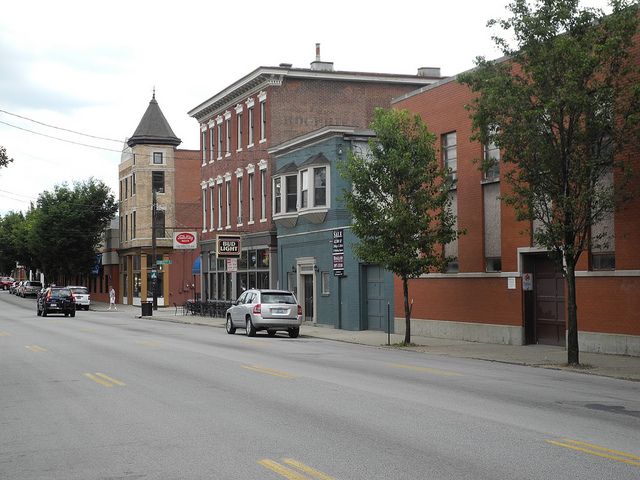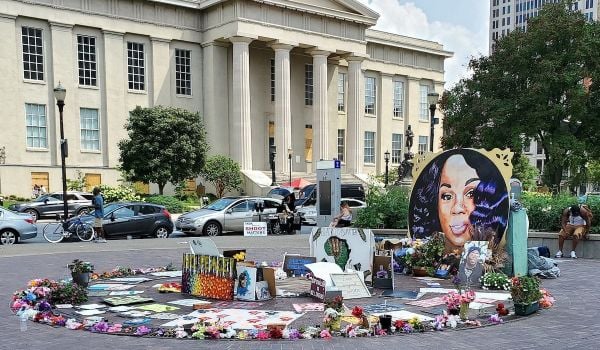What’s the scariest weather event you can think of? A hurricane? Tornado? Storm surge?
None of these is as deadly as heat. An average of 400 people, most of them elderly and living in urban areas, die each year in the U.S. from the effects of heat waves. More than 700 hundred perished in the disastrous Chicago heat wave of 1995. As many as 35,000 died in the European heat wave of 2003.
Brian Stone of the Urban Climate Lab at Georgia Tech is studying the way cities are getting warmer and how we can mitigate this trend in order to save lives. Stone, the author of a 2012 book called The City and the Coming Climate, specializes in analysis of the “heat island” effect — the difference between the temperature of a major metro area and the surrounding countryside.
Last year, he and his colleagues released an analysis of data from the 50 largest cities in America. And it came as something of a surprise that Louisville, Ky. had the unhappy distinction of being on top.
The average increase in the temperature difference between urban and rural environments in the Louisville area has been 1.67 degrees Fahrenheit every decade between 1961 and 2010. That’s nearly double the rate of the next city on the list, Phoenix, which saw an average change of .96 degrees in the same period.
Stone said that part of Louisville’s problem stems from the unfortunate meteorological conditions of the Ohio River Valley, which is prone to stagnant air conditions because of prevailing weather patterns. There’s nothing to be done about that.
But another likely contributing factor is the lack of tree cover in Louisville. “The tree canopy downtown is one of the sparsest of any city I have seen in the country,” Stone said. The tree cover in Louisville’s larger metro area is around 30 percent, according to Stone’s research, with the urban core at just 10 percent. That compares to about 45 percent in the city of Atlanta.
And that lack of greenery — unlike Ohio River Valley weather patterns or global warming — is something that Louisville’s municipal leaders could change.
“It’s at least part rooted in policy,” Stone said. “It’s one of the only major cities in the United States that doesn’t have a tree ordinance.”
Stone has presented his research to the city and spoken before the Louisville Metro Tree Advisory Commission. But the city is still dragging its feet on instituting a comprehensive tree policy like the ones adopted by other cities around the country. Developers are reluctant to spend more money on planting trees and have disputed the dismal estimates of the city’s tree canopy. And just a couple of weeks ago, according to the Louisville Courier-Journal, the mayor’s office rejected the idea of a tree protection ordinance:
In a letter written Tuesday, the mayor told his Louisville Metro Tree Advisory Commission that it would be “premature to pursue” an ordinance “until we have an adequate inventory of our trees.”
The mayor’s economic development director, Ted Smith, attended a tree commission meeting Tuesday and said the mayor also doesn’t yet support a “no-net-loss” trees policy that the commission also requested.
“If we truly don’t understand our baseline, it would be difficult to enforce a strong policy,” Smith said.
Such a study, according to the mayor’s office, would cost money the city doesn’t have.
Stone said that aggressive tree planting and maintenance programs are actually one of the most cost-effective measures a city can take to deal with rising temperatures, which pose the most significant immediate public health threat related to climate change.
“If you’re worried about how rapidly your city is warming, cutting greenhouse gases around the planet won’t cool your city for a couple of hundred years,” Stone said — not to mention that it can’t be done without the cooperation of national and international governments. Countering the heat island effect, on the other hand, is a local issue.
“If you’re worried about heat,” Stone said, “the good news is that it’s a phenomenon you can influence by yourself if you’re a mayor of a major city looking at planning for that over the next 20 to 100 years.”
Some cities are making progress in implementing heat mitigation measures. Chicago has been a leader in creating a building policy that has led to a proliferation of green roofs in the city, with an eye not just to cooling temperatures but also to preventing stormwater runoff and providing other environmental benefits. Seattle has a new zoning tool called Green Factor that aims to increase green cover by requiring a certain amount of landscaping and permeable surfaces in new developments. New York and other cities have embraced “million trees” planting programs.
But despite the relatively low-tech measures that can significantly diminish the heat island effect — which include reflective roofs as well as vegetative cover — Stone said that no city in the U.S. has taken the heat island effect as seriously as it should.
“There’s not a single U.S. city that has a comprehensive heat mitigation plan,” he said. “It’s highly feasible, and the cost relative to our other options is highly reasonable. You can cool down your house, your neighborhood, the place that you care about. It’s making climate change relevant to people’s lives.”

Sarah Goodyear has written about cities for a variety of publications, including CityLab, Grist and Streetsblog. She lives in Brooklyn.









_600_350_80_s_c1.JPEG)






